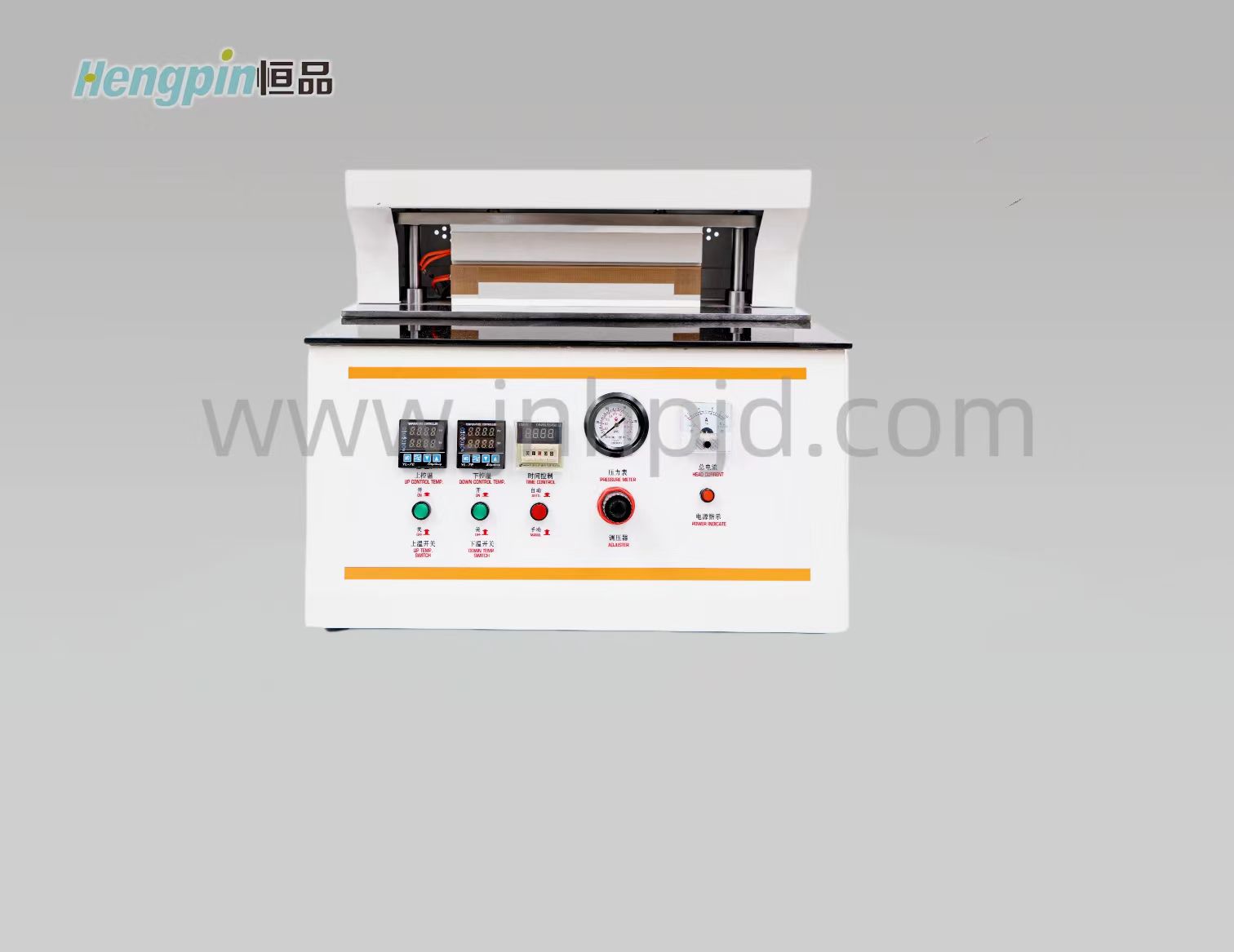Product Introduction:
The thermal paper standard static color tester is mainly used to quickly test the thermal reaction state of thermal materials under different conditions, in order to verify the thermal quality of thermal materials or to detect the optimal thermal parameters of thermal materials. It is an essential testing equipment for thermal sensitive material production units, users, and quality control departments. Meet GB/T28210-2011 thermal paper, QB/T2694 lottery paper.
Working principle:
The thermal reaction tester adopts the hot pressure detection method, placing the thermosensitive material between the upper and lower heating blocks, and then closing the upper and lower heating blocks to heat the thermosensitive material. The heating time, temperature of the heating block, and closing pressure of the heating block can be adjusted, allowing for rapid evaluation of different test samples. This instrument is controlled by a fixed program and has simple settings. It can be used to detect different thermosensitive materials, and can also be used to determine the ideal thermosensitive parameters for a specific thermosensitive material, providing users with accurate thermosensitive indicators.
Technical indicators:
1. Thermally sensitive temperature at room temperature+10 ° C to 250 ° C
2. Thermally sensitive pressure: 0.05-0.7MPa
3. Thermal sensitivity time: 0.1~999.9 seconds
4. Temperature gradient ≤ 20 ℃
5 heating surfaces 330mm x 10mm (customizable)
6. Gas source pressure ≤ 0.7MPa
7. External dimensions: 500mm x 330mm x 470mm (L x B x H)
8 power supply AC 220V ± 10% 50Hz
9 Net weight 30kg
Technical features:
The thermal reaction tester is based on the principle of thermal discoloration of thermosensitive materials, using heating blocks designed according to national and international standards. It is specialized in measuring the thermal discoloration status of various thermosensitive materials and the degree of discoloration under different working conditions, thereby guiding large-scale industrial production. This instrument mainly includes the following characteristics:
1. Number P I. D temperature control technology can not only quickly reach the set temperature, but also effectively avoid temperature fluctuations
2. Wide range temperature, pressure, and time control can meet various testing conditions of users
3. The manual and foot pedal test start modes, as well as the anti scald safety design, can effectively ensure the convenience and safety of user use
4. Precision mechanical design is adopted, and the aluminum can sealed heating block ensures the uniformity of heating on the heating surface. The cylinder controls the lifting of the heating block to evenly apply pressure on the thermosensitive material
5. The downward cylinder design not only ensures the stability of the instrument during operation, but also effectively avoids pressure fluctuations caused by heating
6. Both the upper and lower heating blocks can independently control the temperature, providing users with more combinations of experimental conditions
7. Bottom mounted dual cylinder synchronous circuit further ensures uniform pressure distribution on the heating surface
8. The extended heating block can meet the needs of heating large or multiple samples simultaneously, and supports customization of special heating styles.
9. Configure foot switches to ensure safe user operation
10. The pneumatic control components have high precision, and the entire set adopts internationally renowned brands
11. Anti scalding design and leakage protection design for safer operation
12. The heating element is carefully designed, with uniform heat dissipation and long service life
13. Specially optimized and designed operation panel based on principles of ergonomics for convenient operation
14. One temperature can be set for each experiment
Operation usage:
1. Connect the compressed air pipe to the compressed air inlet on the left side of the instrument;
2. Connect the foot switch to the left side connection of the instrument;
3. Connect the power cord socket to the power inlet on the left side of the instrument;
4. Prepare thermosensitive materials;
5. Inject compressed air and use the adjusting handle to adjust the pressure to a value that can bring the upper and lower heating blocks together, usually 0.18-0.30 Mpa;
6. Turn on the power switch on the left panel;
7. Turn the heating switch of upper heating block 12 and lower heating block 11 to ON;
8. Set the temperature controller to the desired temperature;
9. Take about 10-30 minutes to stabilize the set temperature;
10. Set the timer to the desired time, which is the closing time of the heating block;




